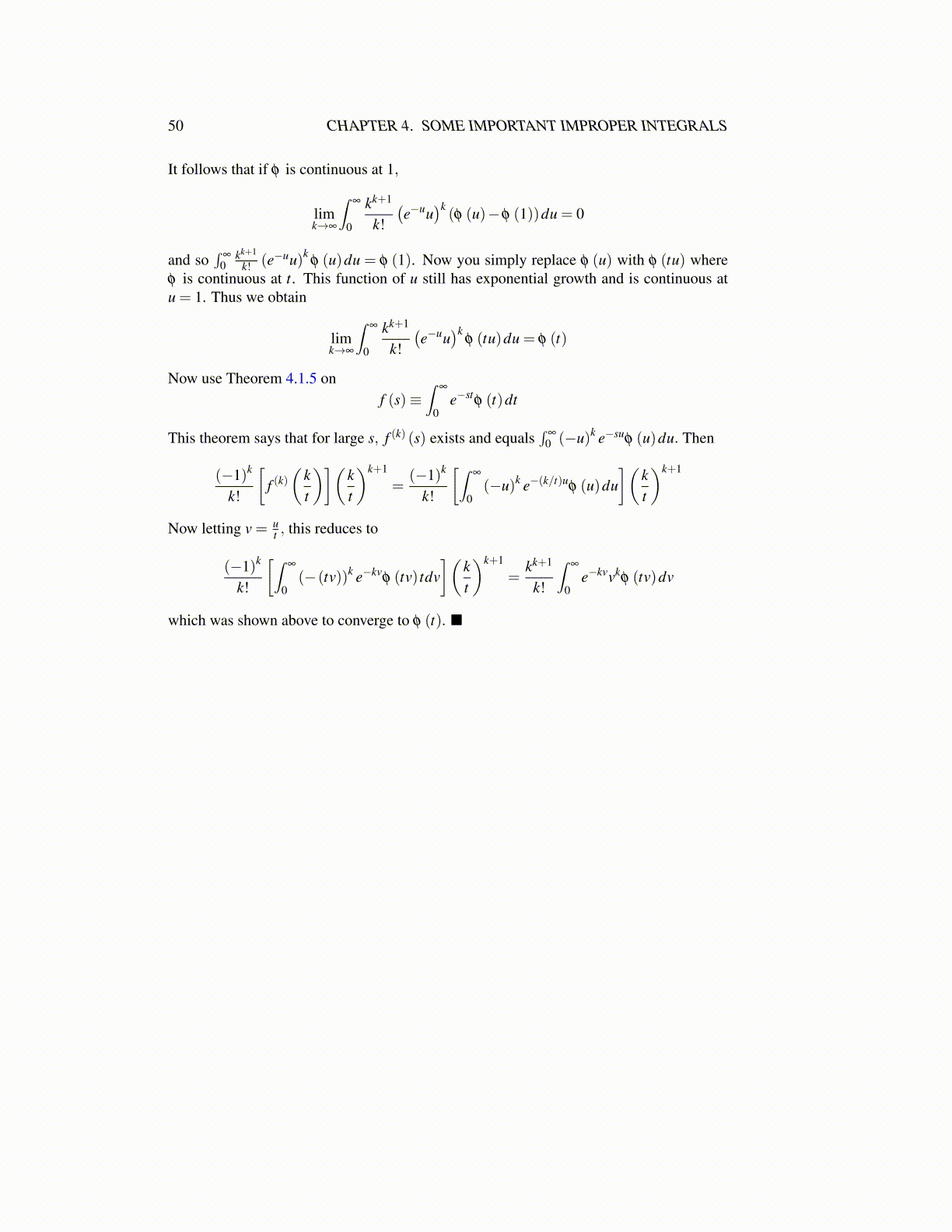
50 CHAPTER 4. SOME IMPORTANT IMPROPER INTEGRALS
It follows that if φ is continuous at 1,
limk→∞
∫∞
0
kk+1
k!(e−uu
)k(φ (u)−φ (1))du = 0
and so∫
∞
0kk+1
k! (e−uu)kφ (u)du = φ (1). Now you simply replace φ (u) with φ (tu) where
φ is continuous at t. This function of u still has exponential growth and is continuous atu = 1. Thus we obtain
limk→∞
∫∞
0
kk+1
k!(e−uu
)kφ (tu)du = φ (t)
Now use Theorem 4.1.5 onf (s)≡
∫∞
0e−st
φ (t)dt
This theorem says that for large s, f (k) (s) exists and equals∫
∞
0 (−u)k e−suφ (u)du. Then
(−1)k
k!
[f (k)(
kt
)](kt
)k+1
=(−1)k
k!
[∫∞
0(−u)k e−(k/t)u
φ (u)du](
kt
)k+1
Now letting v = ut , this reduces to
(−1)k
k!
[∫∞
0(−(tv))k e−kv
φ (tv) tdv](
kt
)k+1
=kk+1
k!
∫∞
0e−kvvk
φ (tv)dv
which was shown above to converge to φ (t). ■
50 CHAPTER 4. SOME IMPORTANT IMPROPER INTEGRALSIt follows that if @ is continuous at 1,co aanlim —ko JQ) k!(e“u)* (o (uw) — 9 (1)) du =0Kkt+land so fo “G- (e“u)* o (u) du = @(1). Now you simply replace @ (uw) with @ (tu) where@ is continuous at t. This function of u still has exponential growth and is continuous atu = |. Thus we obtainco Kkt+1lim —ove o &k!Now use Theorem 4.1.5 on£(s)= [eo (atThis theorem says that for large s, f() (s) exists and equals [5° (—u)* e~™@ (u) du. Thency ir (‘) (*)” _ 1) Ef -ute¥6 ana ayXutNow letting v =cy Lf cote" oyrar| ()" = ae (tv) dvwhich was shown above to converge to @ (t)., this reduces to